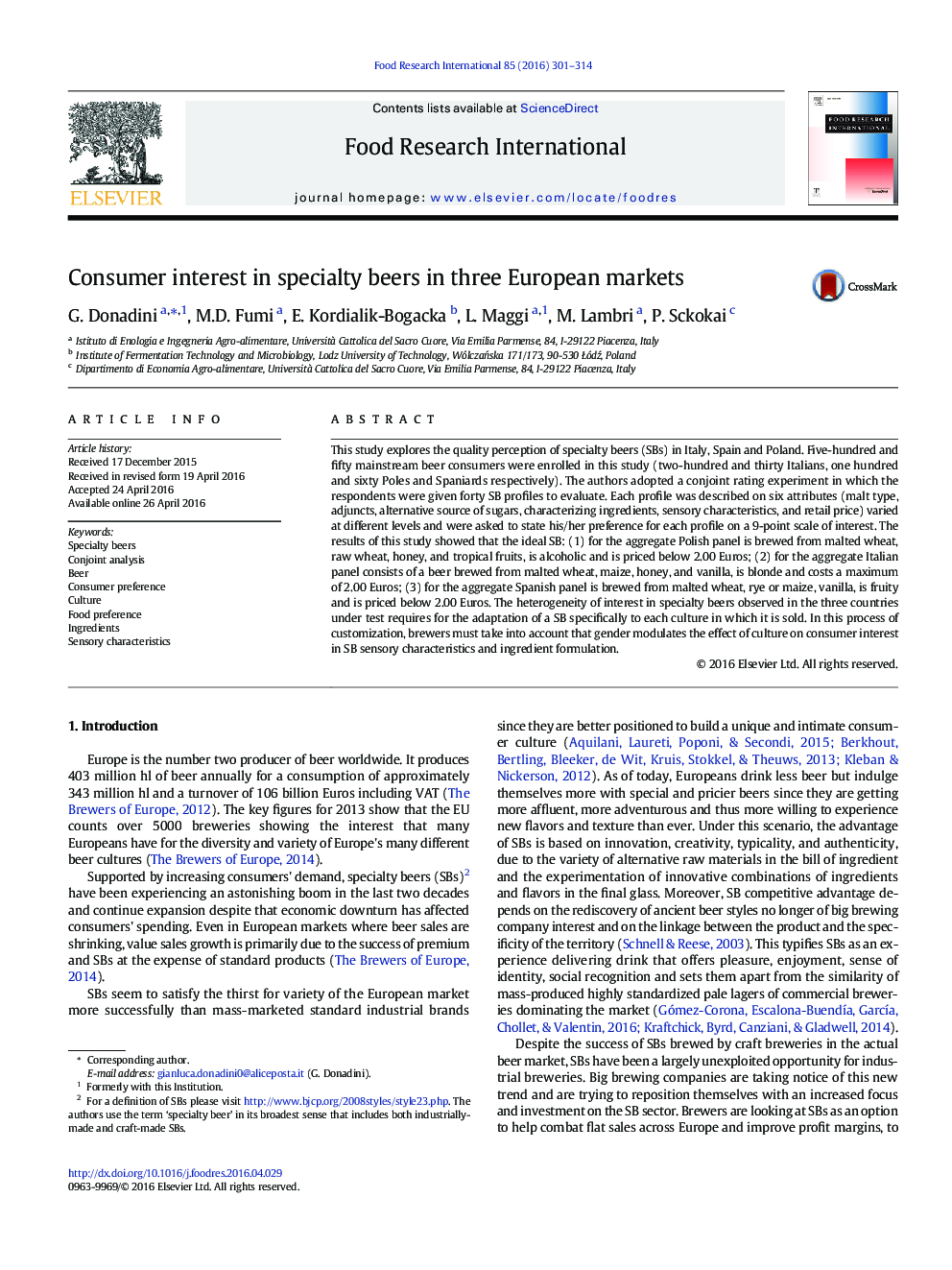| کد مقاله | کد نشریه | سال انتشار | مقاله انگلیسی | نسخه تمام متن |
|---|---|---|---|---|
| 4561064 | 1628463 | 2016 | 14 صفحه PDF | دانلود رایگان |
• This study explored the interest for SBs in Italy Spain and Poland.
• Patterns of common interests between the three countries and market specific trends were found.
• Gender moderates the effect of culture on interest for SB features.
• Adaptation of a SB to each culture in which a SB is sold is required to appeal to local palates.
• Complete customization or standardization is a matter of degree.
This study explores the quality perception of specialty beers (SBs) in Italy, Spain and Poland. Five-hundred and fifty mainstream beer consumers were enrolled in this study (two-hundred and thirty Italians, one hundred and sixty Poles and Spaniards respectively). The authors adopted a conjoint rating experiment in which the respondents were given forty SB profiles to evaluate. Each profile was described on six attributes (malt type, adjuncts, alternative source of sugars, characterizing ingredients, sensory characteristics, and retail price) varied at different levels and were asked to state his/her preference for each profile on a 9-point scale of interest. The results of this study showed that the ideal SB: (1) for the aggregate Polish panel is brewed from malted wheat, raw wheat, honey, and tropical fruits, is alcoholic and is priced below 2.00 Euros; (2) for the aggregate Italian panel consists of a beer brewed from malted wheat, maize, honey, and vanilla, is blonde and costs a maximum of 2.00 Euros; (3) for the aggregate Spanish panel is brewed from malted wheat, rye or maize, vanilla, is fruity and is priced below 2.00 Euros. The heterogeneity of interest in specialty beers observed in the three countries under test requires for the adaptation of a SB specifically to each culture in which it is sold. In this process of customization, brewers must take into account that gender modulates the effect of culture on consumer interest in SB sensory characteristics and ingredient formulation.
Figure optionsDownload as PowerPoint slide
Journal: Food Research International - Volume 85, July 2016, Pages 301–314
